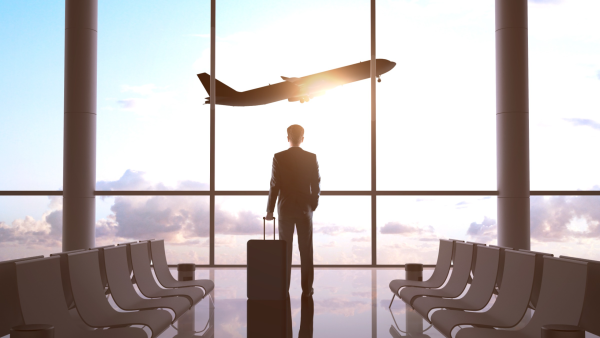7 Emerging Technological Trends Shaping Aviation in 2022

REPOSTED FROM TRAVEL RADAR. READ THE ORIGINAL ARTICLE HERE: HTTPS://TRAVELRADAR.AERO/2022-TECH-TRENDS/
Technological aviation trends have changed the aviation sector over the past few years. In addition, this is to make operations more seamless. Moreover, when the pandemic hit, there was an urge for new technology to make air travel easier due to the restrictions.
The International Air Transport Association stated that 2020 was the worst year for the aviation sector ever to be recorded. Many players in the industry have been trying to navigate the impact of the pandemic resulting in an increased demand for technological trends that will address the issues faced by the aviation industry.
Let’s go through some emerging technological aviation trends shaping the industry this year.
Blockchain
Currently, most sectors worldwide are testing blockchain, aviation being one of them. The technology is mainly seen in aircraft manufacturing. Aircraft manufacturers like Boeing have aggressively utilized blockchain technology to keep enduring and shareable records of aircraft systems and parts during manufacturing and maintenance. For this reason, they can forecast maintenance events, prolong the durability of certain elements, and optimize production tasks.
Furthermore, French aircraft manufacturer Airbus is introducing solutions integrated with blockchain technology in their supply chain tracking and procurement systems. Blockchain technology has facilitated efficient, faster, and secure transactions.
In-Flight Connectivity
Most customer preferences continue to be served by technological advancement in all sectors. In-flight entertainment is a field that technology is contributing to its efficiency. Moreover, airlines around the globe are rushing to ensure that their in-flight entertainment systems are updated with the current customer requirements. The systems include smartphone compatibility, surround sound audio, and in-flight connectivity.
Artificial Intelligence and Machine Learning
Airports worldwide use AI and machine learning technology to offer an overview of security procedures, travel patterns, check-in routines, parking, and retail spending. Also, the aviation manufacturing sector is implementing these technologies to identify engine faults, increase the durability of aircraft components and reduce maintenance costs.
Also, aircraft manufacturers have integrated machine learning solutions to design planes and automate manufacturing operations.
Smart Airports
The aviation sector has been adapting to the norm of integrating new technologies to make everything contactless and digital. This has been the norm since the pandemic started, and the sector is rushing to digitize its operations since it is the new normal. Currently, many airports have digitized their check-in procedures to reduce human interaction since smart airports are the future. Also, if you walk into most airports, you will notice they have automated checking desks that have replaced the traditional ones. There is digital signage that guides travellers through the boarding procedure.
Moreover, airports have digitized security clearance, introduced advanced object and body scanning technology, automated boarding process, and paperless boarding passes. These technologies are linked through the internet of things (IoT) and processed and managed by AI and machine learning solutions.
Self-Service and Biometrics
Advanced self-service and biometrics are elements of smart airports. Soon, automated passenger experience will have self-service kiosks integrated with biometrics such as facial recognition.
Some airlines, such as Star Airlines, have rolled out such technology, where they created a new biometric identity and identification platform in Germany last year. The airline will introduce the system in America later this year.
Fort Lauderdale Airport has installed a facial biometric check-n system for cabin crew. VINCI Airports is the first airport operator to install biometrics in the entire passenger journey from home to boarding the plane using its artificial intelligent travel assistant system.
Sustainability
There has been mounting pressure for the aviation sector to do its part against the impacts of climate change. Technological advancement has been promoting the changes implemented by the industry to have a positive effect, such as using more sustainable biofuels. For this reason, sustainability is one of the industry’s most important aviation trends.
Airlines such as Southwest have started using a paperless ticketing system to reduce energy consumption and carbon output. In addition, these sustainability technologies will increase fuel efficiency, eliminate waste and decarbonize the aviation sector.
IoT and Cloud Technology
The aviation sector has embraced cloud technology since it delivers excellent tangible advantages and helps reduce its carbon footprint. Cloud networks are currently being integrated into airports and will serve as the infrastructure for IoT-enabled gadgets. IoT and cloud technology assist airports in reducing costs since they are costly operations. Implementing a minor efficiency saving due to the IoT-enabled sensor PoE (Power over Ethernet) lighting can save the aviation industry some operating costs.
Conclusion
In the next few years, the passenger and airport experience will differ from the human-operated procedures we see today. In addition, this change is being seen this year through the technological advancements in AI, cloud networks, IoT, biometrics, and contactless technology. For this reason, key players in these sectors are up their game to catch up and keep up with the demand for these technologies in the aviation industry.
References:
